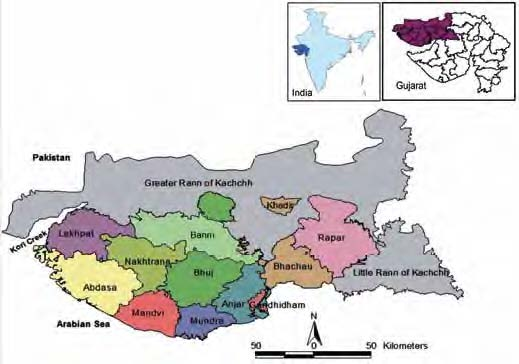NGT upholds rights of pastoralists in Banni grasslands, wants encroachments removed
About Banni Grasslands

- Banni region comprises around 3000 sq.km area under Bhuj taluka of Kutch district of Gujarat.
- It is home to one of the prominent pastoralist communities, the Maldharis.
- The Banni region emerged from the sea as a result of tectonic activities, received soils from the rivers flown from Bhuj mainland and ended in Greater Rann of Kutch.
- Soils deposited by the rivers and the wind, made the land of Banni richer enough that it could generate diverse grass species, mostly palatable with saline grass species.
- Two ecosystems, wetlands and grasslands, are juxtaposed in Banni. The area is rich in flora and fauna, with 192 species of plants, 262 species of birds, several species of mammals, reptiles and amphibians.
- There have been numerous natural wetlands in Banni and the larger one is known as Chhari – Dhandh, a saucer shaped wetland which was recently declared as Conservation Reserve.
Why in the news?
- Noticing the exceeding cases of encroachment in Banni grasslands which threatened the biodiversity as well as livelihood of Maldharis, the National Green Tribunal (NGT) has upheld the right of Maldharis in the region.
- Read more about NGT @ https://officerspulse.com/national-green-tribunal/
- Their rights were recognised under Section 3 of Forest Rights Act, 2006.
- The NGT noticed that lack of coordination between revenue and forest departments have led to encroachments and they must be removed within 6 months.
- In 1955 the Banni grasslands were declared as reserve forests. But in 2019 there was an order to demarcate the boundaries of the Banni grassland and restricted non-forest activities, which exposed encroachments.
- The NGT’s order has brought relief to the pastoralists of Banni. Their BANNI BUFFALO which has been recently recognised as 11th breed of Buffalo in India, depends on these grasslands.
References:
Subscribe
Login
0 Comments
